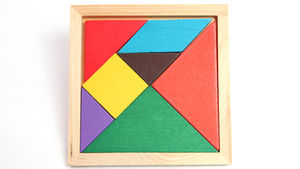
Jatinder Koharki

Read the full post below the short video. Don't forget to like and leave a comment!
Welcome to the second post in my seven-week blog to keep the middle-aged mind sharp, given all the conveniences and shortcuts tempting us to hit pause on our own brains. Today’s post is about Math. When was the last time you did any math in your head? Or with a piece of paper and pen? How often do you pick up your smart phone to add two numbers?
I became so dependent on Excel and my phone that, over time, I became lazy and did not notice the pile of mush that was beginning to spread inside my brain. When addition and subtraction became tasks to skip because they might take too long, the internal signal came on and I knew I had to solve this problem.
A simple search on Microsoft Edge for “How does math help the brain?” generated four key results: (try it for yourself)
· Strengthening reasoning skills and critical thinking
· Enhancing analytical thinking and problem-solving skills
· Fostering systematic and logical thinking
· Broadening the mind to handle unfamiliar tasks with confidence
I did not copy and paste the four points listed above from my Edge window. I retyped them, a few words at a time. Sound familiar? Growing up, I was like every other kid who asked his/her math teacher, “When am I going to use this?” The older I got, the more I answered my own question. I hope you have too.
Critical thinking is the one skill I hear repeatedly as lacking in the workforce that has entered the corporate world over the last ten years. What is critical thinking? In my experience, it is the ability to arrive at an informed decision or argument using education, evidence, and experience (the three Es), and to reevaluate a decision or argument using those three Es.
For me, critical thinking informs the other three bullets. Without critical thinking, a thorough analysis of any subject or object is not possible. Without analytical thinking, problems cannot be solved for the best possible outcome. They may not get solved at all. OR they may get solved to get through today only to ring the doorbell again tomorrow.
Systematic thinking is the ability to break down and “understand the different elements of a system or a structure.” Again, simple search on Edge. It informs a logical breakdown of something to understand what it is made of and what it is capable of. Without reasoning and critical thinking (the three Es), I may not be able to break something down into logical parts.
Will you and I come up with the same logical breakdown? Most probably not. Because each of us thinks differently, reasons differently, and absorbs information differently. The beautiful diversity in critical thinking generates new ideas, sparks innovation, and results in countless flavors of ice cream. But critical thinking must exist for that to happen.
These days, I put down my smart phone and pick up a pencil to add those two numbers. Because there will be unfamiliar tasks ahead.
Disclaimer: This content is neither advice nor instruction. Medical or otherwise.
Related Posts
Copyright © Book for Every Nook Publications LLC. All Rights Reserved.





